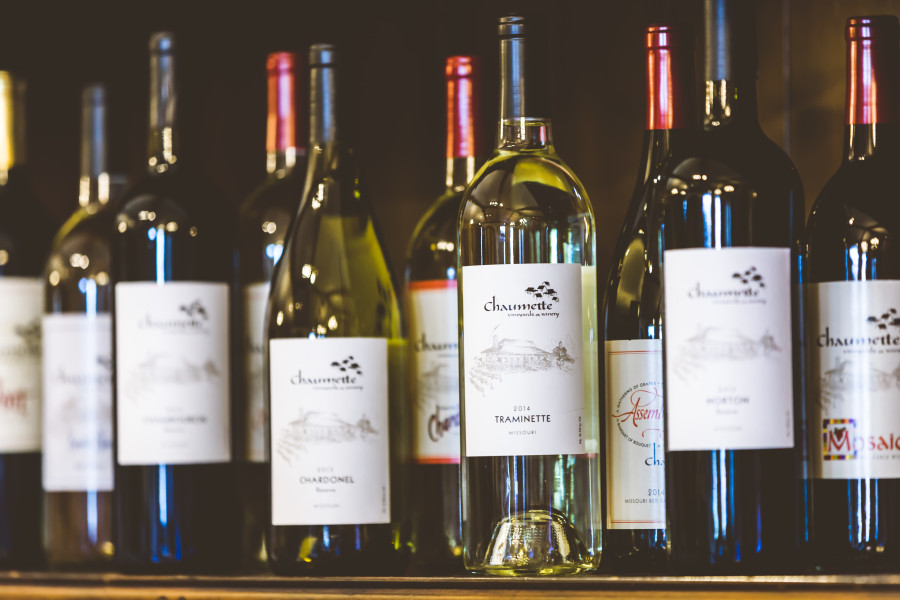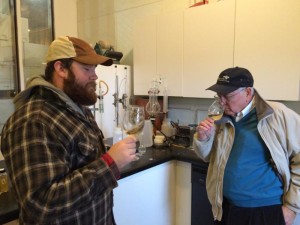Winter Vineyard Greetings from Hank

The vineyard is asleep. We finally reached what I believe is deep dormancy a couple weeks ago. Nighttime temperatures have been dropping, except for an occasional uptick, and now we see close to normal January temperatures. Dormancy is controlled by not only temperature but also day length.
So, in those warm days that we experienced in December, the fact that the days were getting shorter still affected the movement toward deep dormancy. In dormancy, individual cells shed water into the intercellular spaces, (or the gaps between the individual cells.) This reduction of water from the cytoplasm of the cell raises the salinity. The higher level of salt works as a natural antifreeze and protects the integrity of each individual cell.
In the middle of December, we began what we call pre-pruning. One member of our crew, Vern Isenman, worked his way through various blocks of vines, cutting off the growth from last year at a level just below the highest trellis wire. This accomplishes two things. One, it makes the final pruning much easier because some shoots grow horizontally along a wire, while others hang down and become entangled with other shoots. Those tangled shoots are pulled out of the trellis by the person doing the pre-pruning, making it easier and more efficient for the final pruners to make their cut 4 -6 inches above the horizontal main cordon. The second advantage is that there are still 2 1/2 to 3 feet of shoot material remaining on the vine. If we have extremely low temperatures, it is the apex or the end of the shoot that is most susceptible to cold damage. Ultimately, this part is cut off anyway by the final pruning. In sum, we simplify the final pruning without sacrificing protection of having 2 1/2 to 3 feet of the shoot still in place.

I have discovered a new pleasure that goes along with having my son Henry here as our winemaker. Almost every day, he and I have a discussion about some phase of winemaking. One day, it might be about the size of a particle that will pass through a certain filter pad. Or, how you must stage the filter process from a large opening, say from 50 microns to 15 microns to 3 microns to a .45 micron pad in order to prevent the smaller pad from becoming clogged.
A frequent subject of discussion is wine chemistry. Henry studied plant science in undergraduate school at the University of Vermont and had a minor in Biological Chemistry. Our conversations often center around pH, (bound, free and molecular;) titratable acidity and what makes it rise or fall; volatile acidity; levels of soluble solids; and alcohol levels. We have the capability of precisely measuring the amounts of all these components of our wine in our lab. This time of year, Henry spends a part of every week monitoring the levels of these and other chemical characteristics of our wine. All this testing brings on long technical discussions… what a pleasure it is to learn from our children!
We’ve got some pretty terrific things to offer at Chaumette this month ~ join us for Valentine’s dinner Friday, Saturday or Sunday evening of Valentine’s Day weekend, or stay in our villas on a Sunday through Wednesday evening, and our Executive Chef Rob Beasley will prepare a dinner for you in-villa! We are offering several winter villas getaways specials, including a villa rental coupon.The winter months are such a wonderful time to get away from the bustle of daily life for a bit of quiet reflection and relaxation. On that note ~ we hope to see you soon!
Cheers!
Hank


+ There are no comments
Add yours